An ever-green story about how the Jewish community found a home in India
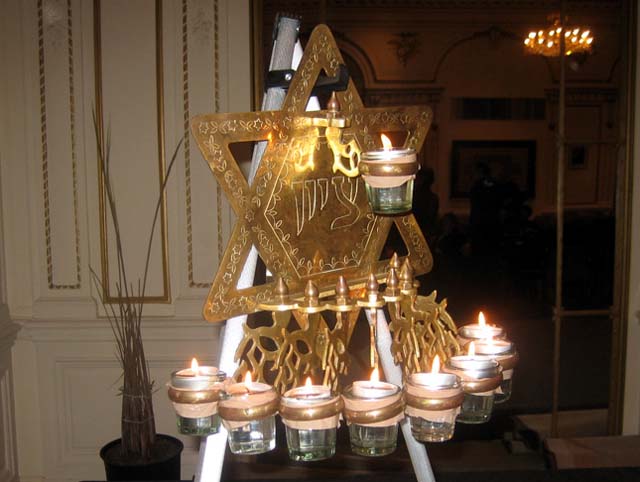
One Indian-Jewish family’s story in America…
If there is one place in the world which has been a safe haven for Jews, it is India.
“India has been the only country in the world where Jews have never been oppressed or suppressed or discriminated against,” says Rabbi Romiel Daniel, who is Jewish-Indian-American. Indeed, India has been nurturing home and haven for generations of Jews whose ancestors fled from persecution centuries ago. At its peak there were about 37,000 Jews living in India. “Discrimination is something that has never happened in India for 2000 years and that is something we are very proud of, and that is why we go back to India so often,” he says.
“We have never ever considered ourselves different from any Indian. We may be Jewish by religion but we are Indians by nationality.” Indeed, India gave these Jews who were fleeing persecution, citizenship, complete freedom to practice their faith, build many synagogues and celebrate their traditional festivals with an added Indian zest. Israel and the Western world may now light candles at Hanukkah but the Indian Hannukiya lamps are lit the old fashioned way, as they were in Biblical times – with oil.
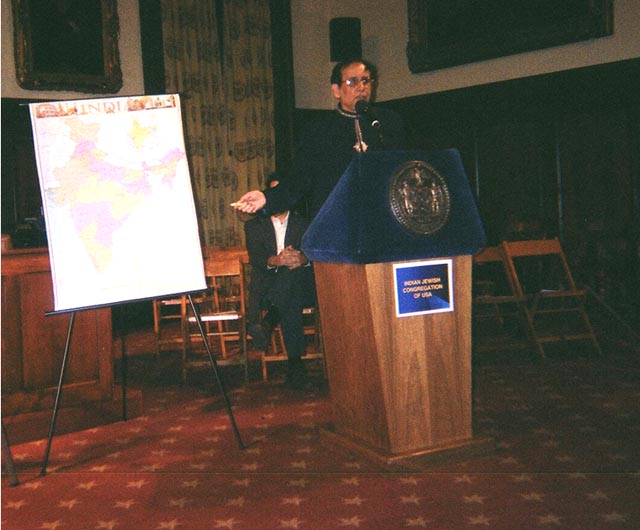
How Did the Jews Land Up So Far from Home?
Romiel Daniel is the religious leader of the Indian Jewish community in New York. He talks to many audiences in America about the Jewish presence in India. Indeed, how did the Jews land up so far from home? He says that according to oral tradition, they fled from Palestine in 175 BC, and one of the safest refuges they could find was India, where they were already trading and they settled there because they were welcomed.
Daniel gives us a whirlwind history: the Jews of India consist of four groups: The Cochin Jews or Cochinis, the Baghdadis, the Bene Israel, and the B’nei Menashe. The Cochin Jews settled in Cranganore and around Malabar in the South and lived there for centuries. They never numbered more than 2500, and many have now left for Israel. In fact, today there are not more than 16 of them left in Cochin, mostly elderly men and women.
The Baghdadis consists of Jews from West Asia, mainly from Iraq and Syria, who came in the 19th century as traders and refugees. They settled in Bombay, Calcutta and Pune. They spoke Arabic or Persian and English. At one time, there were about 5000 of them, but today there are less than 200, most of them having emigrated to U.K., Australia and Canada. The B’nei Menashe – they were a new group which came into being in 1964 and today there are more than 5000 living in North East India. The other community is the Bene Israel which predominates the Jewish presence in India today.
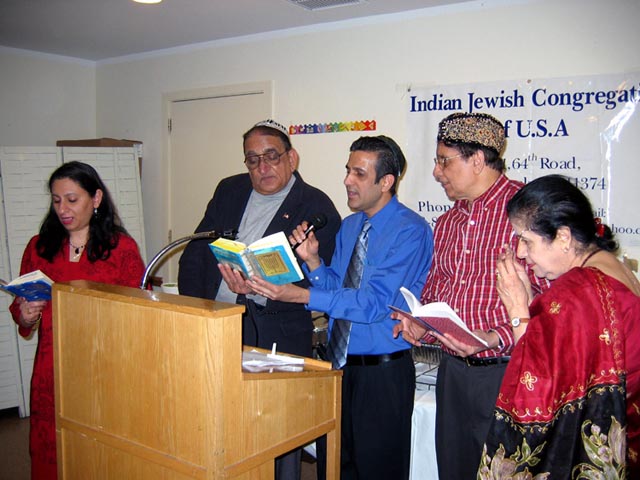
Celebrating Purim with the Bene Israel Jews
It is believed that the Bene Israel community was descended from the Jews who fled in 175 B.C.E. from the Syrian-Greek ruler Antiochus Epiphanes. They were ship wrecked at Navgaon on the Konkan Coast, and the survivors started a new life there and over the years their families spread to the surrounding villages. David Rahabi, a Cochini Jew, is credited with the revival of Judaism amongst the Bene Israel, teaching them Hebrew and the rituals of Judaism. With Bombay (now known as Mumbai) an important port of British India, the Bene Israel moved there in search of opportunities. They set up their first synagogue in 1796, and expanded to 29 synagogues around Bombay and the neighboring villages. Their population grew to 30,000 around the time of independence
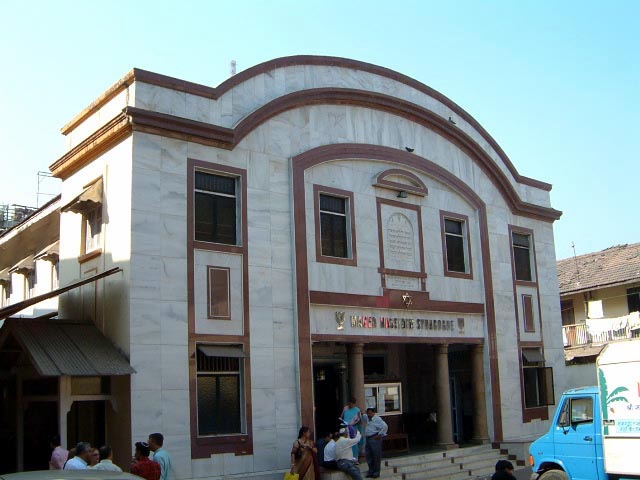
A look at Magan Hassidam Synagogue in Bombay
This is one of the oldest synagogues in India, built around 1846 in Jacob’s Circle in Bombay. It was and is still the most active synagogue, and beautifully maintained. Asked how the other Indian communities have reacted to the synagogues, Daniel says, “We’ve never had a problem with any of the communities – our relationship is good with all of them. Many of the synagogues are right in the midst of the Muslim neighborhoods, right in the center of the city.”
When Israel became a state in 1948, many of the Bene Israel started leaving for Israel, because of religious Zionism. By 1964 more than half the population had left. By the early 70’s there were less than 10,000 and now there are less than 5000 Bene Israel Jews left in India, most in Bombay and Thane. Indian Jews, in spite of their small number, have played an important part in India: Families like the Sassoons and the Elias’, who were Baghdadi Jews, helped in the industrialization of the country. Noted Bene Israel Jews include Dr. E. Moses, the first mayor of Bombay in 1939, and Dr. Jerusha Jhirad, who started the Reform Jewish Movement in India.
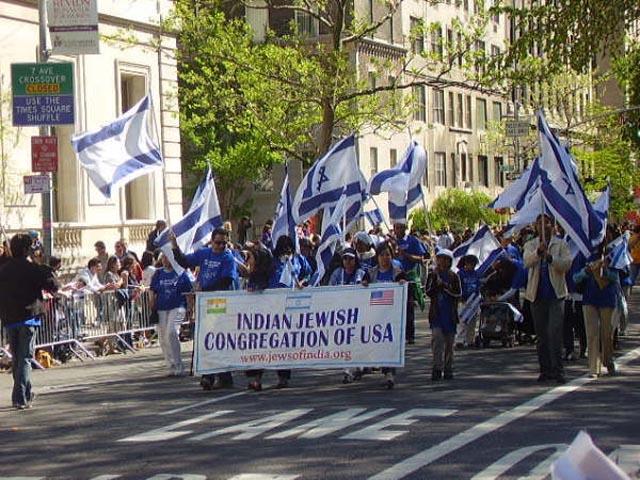
The Story of Indian American Jews
Many Indian Jews have migrated to North America for economic opportunities and today there are about 1500 in Canada and 350 in the US. It’s a small but vibrant community which observes all the high holidays and festivals. “We don’t want to lose our own traditions; we want to integrate but we don’t want to assimilate,” says Daniel who started organizing services for the community in 1995. The Indian Jews are scattered in all five boroughs of New York and in New Jersey, so they attend services at mainstream synagogues. Since they don’t have their own synagogue they rent the Bene Israel Congregation in the Village every year to hold their events. While the liturgy is the same, the trope or musical notations in Indian Jewish traditions are totally different.
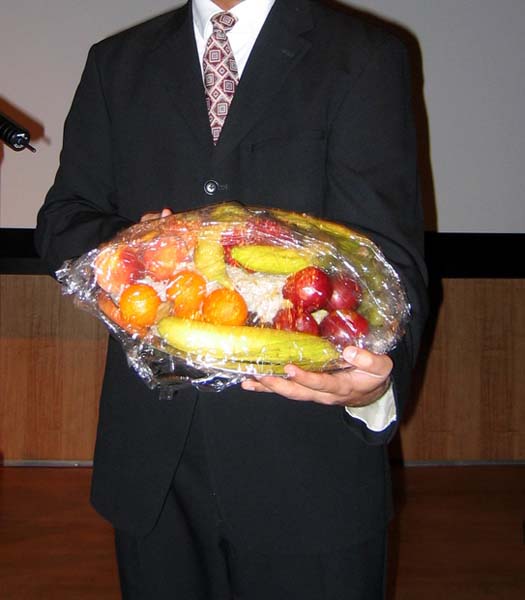
Malida Ceremony, unique to the Bene Israel
The Malida Ceremony offering parched grain is typical of the Bene Israel community and goes centuries back, a Jewish tradition in 1000 BC in the first and second temples of Solomon. Today only the Bene Israel and a few of the Middle Eastern Jewish communities still practice the nine sacrifices and offerings.
The Bene Israel hold Elijah the Prophet in high regard so when they celebrate a marriage, buy a house or start any new venture, they invoke the protection of God through Elijah, and these prayers are said first before any other prayers. Malida is the Persian word for confection, and parched rice is mixed with sweetened coconut, dry fruit, like pistachios and almonds, and offered with five or seven fruits. (Five represent the books of Moses; seven represents completeness in the Jewish tradition.) This ancient tradition is continued by the Bene Israel Jews in New York. In fact, even when they go to Israel, they first visit Elijah’s Cave, which is in Mount Carmel in Haifa, and perform exactly the same ceremony and prayers
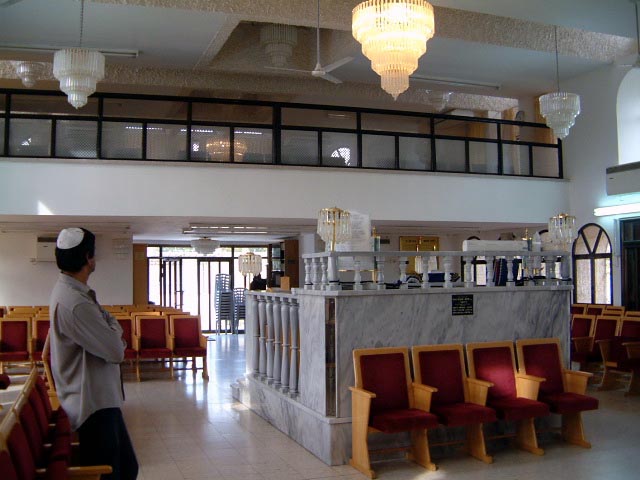
Kehilat – Indian Jewish Synagogue in Israel
More than 70,000 Bene Israel Jews from India now live in Israel but maintain their links with India. Since 1992, trade between Israel and India had been good, and India is now Israel’s second largest trading partner, after Japan, in Asia. Full fledged consulates and embassies have been established between the two countries The Indian-Jewish community is prosperous in Israel and has built 55 orthodox synagogues there, in keeping with the Bene Israel tradition. Indian Jews are in many businesses, including Indian restaurants in Israel – so now you can always get kosher Indian treats there! In fact, Indian food has caught on so much in Israel that you have non-Jewish entrepreneurs – the Punjabis – who run successful Indian restaurants there.
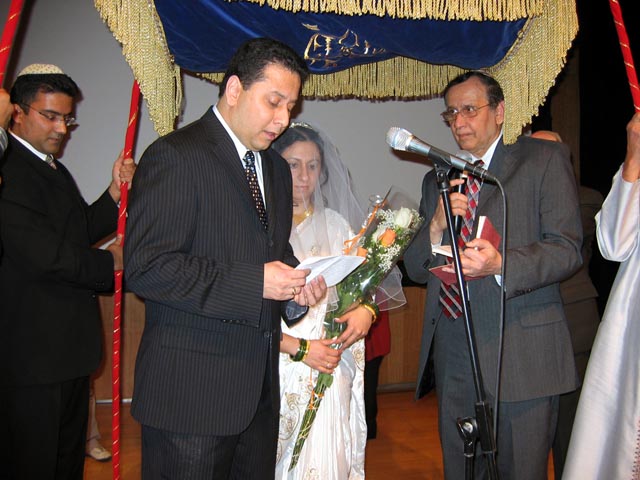
An Indian-Jewish Wedding
Recently Romiel Daniel’s son Lael and his wife Regina reenacted their wedding ceremony for guests to catch a glimpse of the special Indian-Jewish traditions. The bride wears a white sari with intricate gold embroidery and she and the groom enter the synagogue in ways special to the Bene Israel community.
The wedding feast is replete with Indian spices and lots of coconut. Even during the festivals and celebrations, the basic traditional dishes are the same as in other Judaic communities but the methods of preparation vary. Puris or sweet puffs are an Indian delicacy which is made from Rosh Hashanah to Yom Kippur, and at Rosh Hashanah, a special halva of wheat flour with a filling of sweet semolina, dry fruits and sugar is served.
Indian spice and sweets influence the cooking, and Indian curries are a regular at Indian-Jewish homes. As Noreen Daniel explains, “Usually the fish for Rosh Hashanah is bland but we stuff it with spices – with green coriander, ginger, garlic chilies, coconut and lime – and bake it. We try to keep our traditions in the US as much as we can – this is to pay homage to our ancestors who were in India.”
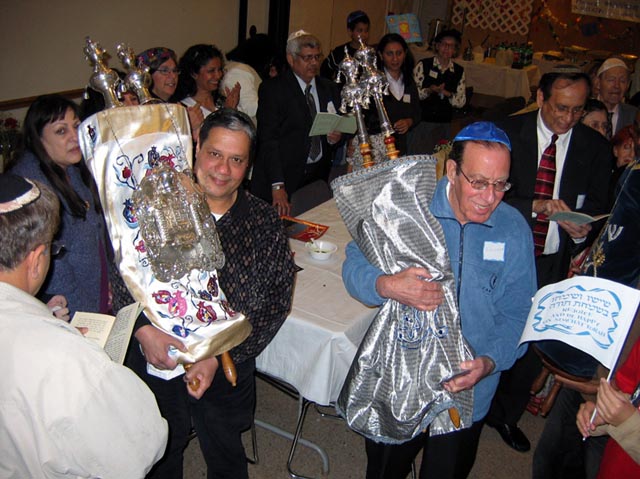
Celebrating Simchat Torah
Ten days after Yom Kippur is the celebration of Simchat Torah where the congregation dances joyously, holding the Sifrei Torahs. The Sifrei Torahs contain the five books of Moses and these handwritten scrolls are very precious, with it taking over a year for one scroll to be completed.
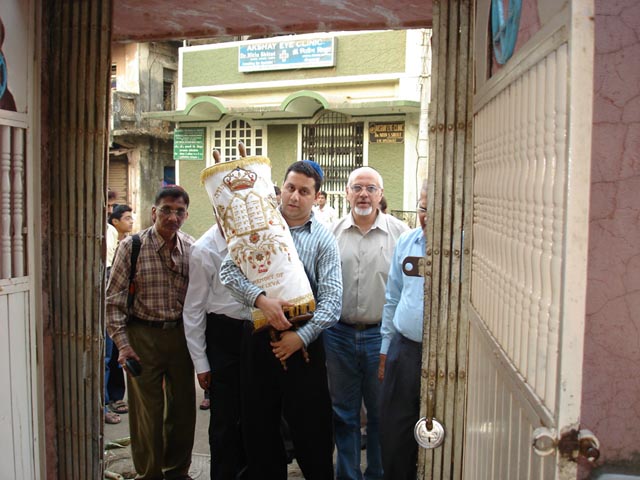
Remembering the Past
The Indian Jews retain their ties with India. When the Beth El Synagogue in Panvel, which is 25 miles from Bombay, was deluged with heavy rains, all six Sifrei Torahs were destroyed. The Bene Israel Jews of New York came to the rescue and gifted two Sifrei Torahs for this synagogue. These were personally delivered to the Indian-Jewish congregation in Panvel, and installed with joy, pomp and a showering of rose petals.
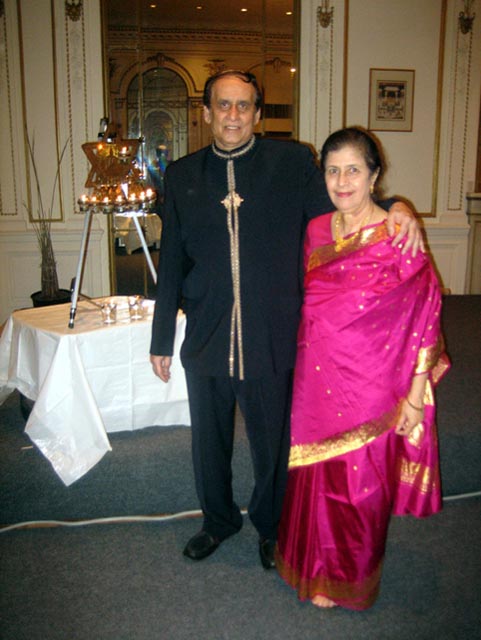
Traditions, Indian-Jewish Style.
Romiel Daniel, clad in a Nehru jacket, and his wife Noreen dressed in a sari light the candles for Hanukkah. The Star of David is made into a Hanukkiya (instrument to hold the oil lamps) a typical sign of the Indian celebration. For lighting the lamps, others may use candles but the Indian Jews still use oil. Says Daniel, “Although our religion is Judaism, we have adapted many cultural traditions of India and are proud of them.”
The Indian Jews in New York have fond memories of their growing up years in India, of close-knit communities and a full freedom to practice their faith and be full members of the Indian family. The lure of Israel as well as economic opportunities abroad have pushed many to leave the homeland where they were born but the connections remain deep. As the Jewish population in India dwindles, the beautiful old synagogues and Jewish schools in India stand as testament to the nurturing welcome the Indian Jews received there and are a nostalgic memory for those who have now left her shores.
(C) Lavina Melwani
(With inputs from the Indian-Jewish Congregation of USA in New York)
Photo credits: The Indian-Jewish Congregation of USA.
(This article first appeared on Beliefnet.com as a photo gallery in 2007.)
Update: Romiel Daniel was born and raised in Mumbai, India in a religious home following the Indian Jewish tradition. After first arriving in the United States, to earn his Masters in Chemistry from Brandeis University, he Daniel returned to India to become the Vice President of an apparel company, moving from India to Mauritius and eventually Madagascar, before finally coming back to America to train as a Cantor at Yeshiva University. In 2008, Rabbi Daniel became Cantor of Rego Park Jewish Center ad in 2015 Rabbi of the Center.

20 Comments
Pingback: Is India a tolerant nation? | Processed Mind
Pingback: Freedom of Speech and Secularism in Indian context. | THREEMUCH
Pingback: Is India a tolerant nation? | iBlog
Jewish community of India are great ambassadors for our country – hope they will carry torch of Indian culture in the near future. We are proud of them. You have mentioned Sassons – don’t forget the Ringtone of All INDIA RADIO is given by a Jew Migrant from Poland & don’t forget Lt Gen Jacob who ensured the surrender of Pakistan in 1971.
Pingback: Fun Fact About India and Judaism | The Year of Cooking Consciously
Thank you!
Very good article.
Hello Riva, I’ll connect you via email.
Please email me with contact information, an email address or telephone number. I belong to East Midwood Jewish Center, a Conservative synagogue in Brooklyn, NY. We would welcome a representative from the Indian Jewish community of NY to come and give a presentation.
Thanks,
Riva
Dear M.Daniel,
Thanks for your wonderful comments on India.
With your beautiful comments bestowed on us, we feel really proud to be an INDIAN in all respects.
I am from Fort Cochin,and in export business. Please do write , if you find time. My address given below.
Regards,
Judeal.
I will be traveling in Northeastern India in March and wonder if there are any Jews/Jewish “sites” in that area? Thanks in advance.
Thank you Mr.Daniel- interesting article- I am a Bene-Israel born n Mogulpura, Lahore and a writer/Author of two books “The Jews of Pakistan a Forgotten Heritage” and “Memory of ages past”
Raj, thank you for your comment. If we stayed with this principle we’d have fewer problems.
Proud to be an Indian who has always welcomed other religions and proved that different religions can stay at peace
I am proud that we (India) have not betrayed this community; I hope, wish and pray that we will allow all religions to come and practice in peace. May god bless all people who live in my motherland.
I am from Reddy background
Very interesting article. Being Indian-American, I enjoyed it and am proud that Indian Jews have contributed to their adopted country and kept their centuries-old tradition of “Live and Let Live”.
Countries like U.S.A, India and Israel can teach the world that synagogues, Hindu Temples, mosques and all places of Worships can co-exist. As for myself, in this small town in Florida, I am a consulting engineer and have completed (engineered) Hindu Temple and Community Hall and am performing structural inspection of Islamic Society Mosque.
Very interesting – I would like to be in touch.
Could you pls let me know how exactly the Cochin jews travelled from Cochin to Israel in the 50s ?
Thank you for this most interesting piece. The revival of the Bene Israelis by the Cochinis is most intriguing. Why did the Benes stop practicing in the first place when they were so large in numbers? Or were there some curbs on them at an earlier time?
Food for thought.